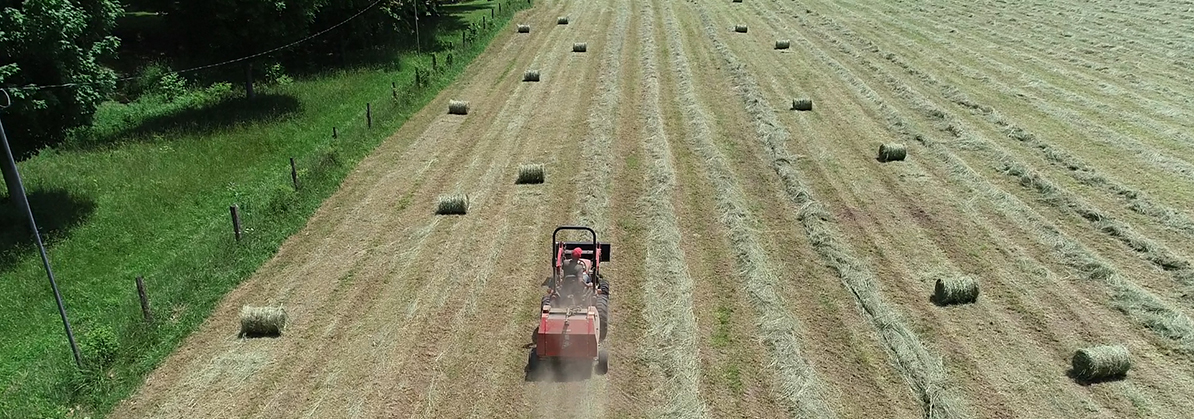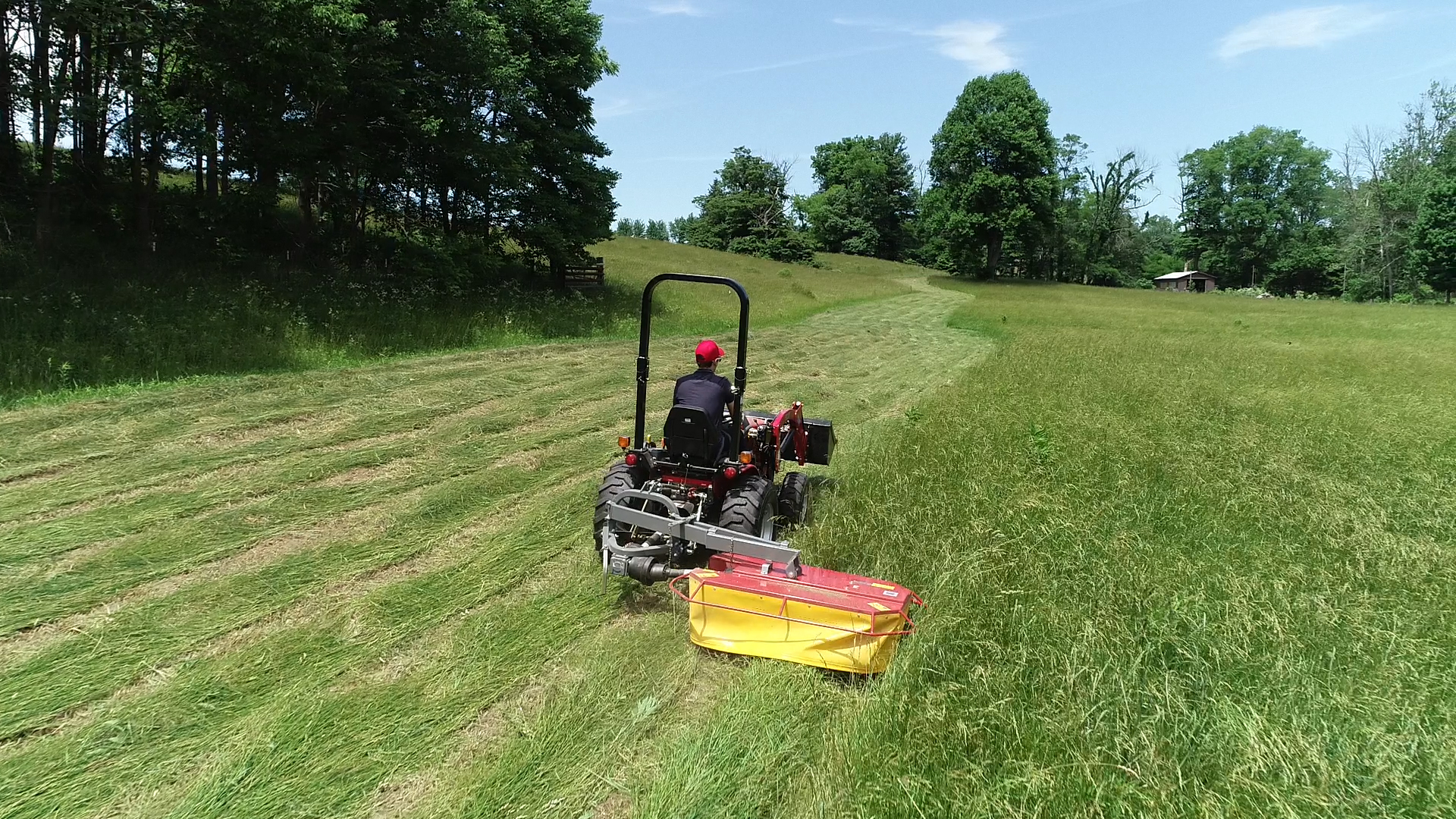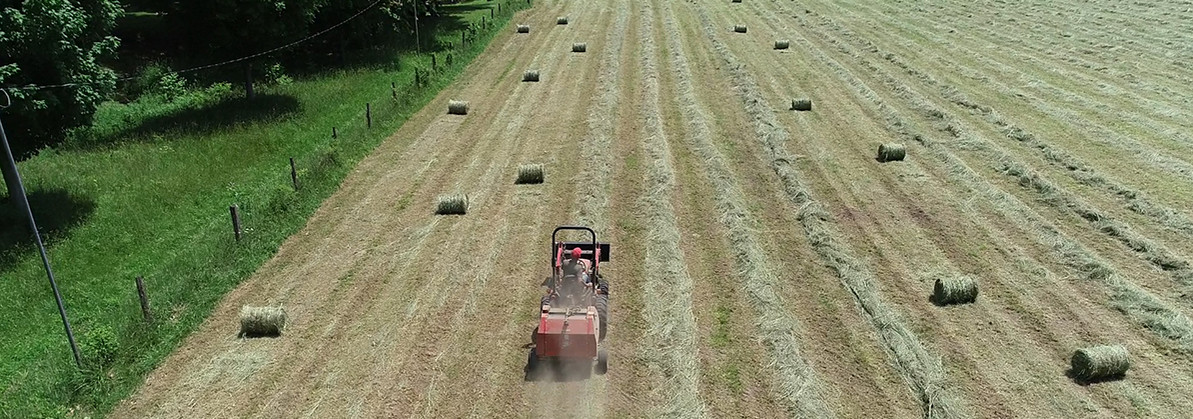Types of Hay and Their Uses

Here at Tractor Tools Direct, we specialize in selling hay-baling equipment not only to small-farm operators who have been haying for years, but also to those just making the jump to haying independence. Therefore, we’d like to cover some of the basics in hay choices and their uses. For those customers who have been haying for years, it can serve as a refresher, but for those new to the adventure, hopefully it can answer some questions they might not have even realized they needed to ask!
For the purposes of this article the focus will be on two types of hay—grasses and legumes. A third type, hay made from grains like oat, barley and wheat, can be occasionally cut green for fodder, but more often is baled after the grain is removed and is used as straw bedding rather than feed.
Grasses can be found in many varieties including fescue, orchard grass, timothy, brome, and bluegrass. The types grown depend on soil conditions and climate. Timothy tolerates cooler weather well, but brome and orchard grass grow well in regions with higher temperatures and humidity. The most common varieties of legumes are alfalfa and clover with alfalfa preferring well-drained soil and clovers growing well in many different climates depending upon the species planted.
The nutritional value of the two types of hay are quite different. Legumes are high in protein and calcium with alfalfa hay’s protein content ranging between 17 and 20 percent and that of clover hay ranging between 14 and 16. These hays provide exceptional nutrition for young maturing animals, for gestating and lactating females, and for females used in dairy production. Performance animals used for heavy work, such as some horses, can also benefit from the extra calories that legume hay provides.
For animals only needing a maintenance level of nutrition or only needing forage to keep the rumen functioning, grass hay is likely the better choice. Grass hays typically provide a protein content of between 6 and 10 percent and fewer calories than legume hays. Furthermore, the high fiber content can make grass hays a good choice for many animals—especially horses.

The beauty of feeding hay is, that animals’ nutritional needs can be met even more specifically by providing hay that is a mixture of grass and legumes. Hay pastures can be seeded in such a way to provide varying percentages of each type of forage. Such practice can even improve performance of pastures and hay fields since legumes return nitrogen to the soil.
As stated above, it is important to keep in mind that the nutritional requirements of animals depend upon on their age and demands— whether they are growing, working, lactating etc. Their needs fluctuate as they progress through their life cycle. When deciding upon which types of forage to grow and bale it is also important to choose varieties that will perform well in the soil conditions and climate of your area.
Happy harvesting!
Sources
Britannica, The Editors of Encyclopaedia. “Clover.” Encyclopædia Britannica, Encyclopædia Britannica, Inc., 31 May 2016, www.britannica.com/plant/clover-plant. Extension & Outreach:: Crop Sciences Department :: College of ACES, University of Illinois, extension.cropsciences.illinois.edu/handbook/.
Garman, Janet. “Hay, Types of Forage, Feeding and Storage.” Timber Creek Farm, 22 Dec. 2015, timbercreekfarmer.com/hay-types-of-forage-feeding-and-storage/.
“Horses and Hay: Best Types of Hay for Horses.” SUCCEED Equine, 2 Dec. 2015, www.succeed-equine.com/succeed-blog/2015/12/02/ha...
“Legumes Can Reduce Need for Nitrogen Fertilizer.” Phys.org – News and Articles on Science and Technology, Phys.org, phys.org/news/2010-03-legumes-nitrogen-fertilizer.html. Thomas, Heather Smith. “All Hay Is Not Equal: Choose Your Livestock’s Carefully.” Hobby Farms, 28 Jan. 2016, www.hobbyfarms.com/all-hay-is-not-equal-choose-yo...
Recent Posts
-
Haying Independence
In this month’s blog, let’s take a deeper look at the foundation of what we here at Tractor To …Apr 1st 2024 -
Be On the Cutting Edge of Modern Market Gardening Using Raised Bed Systems: FULL-TILL, MINIMUM-TILL, and NO-TILL
Market gardening is the production of vegetables, fruits, flowers and other plants on a scale larger …Mar 1st 2024 -
No Loader? No Problem.
So you have a compact tractor on your small farm, but you don’t have a front loader. Maybe price put …Feb 1st 2024




